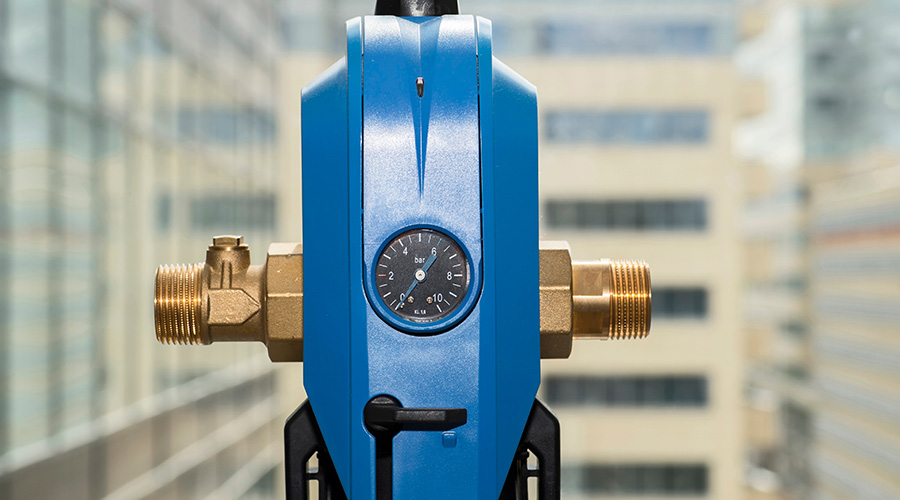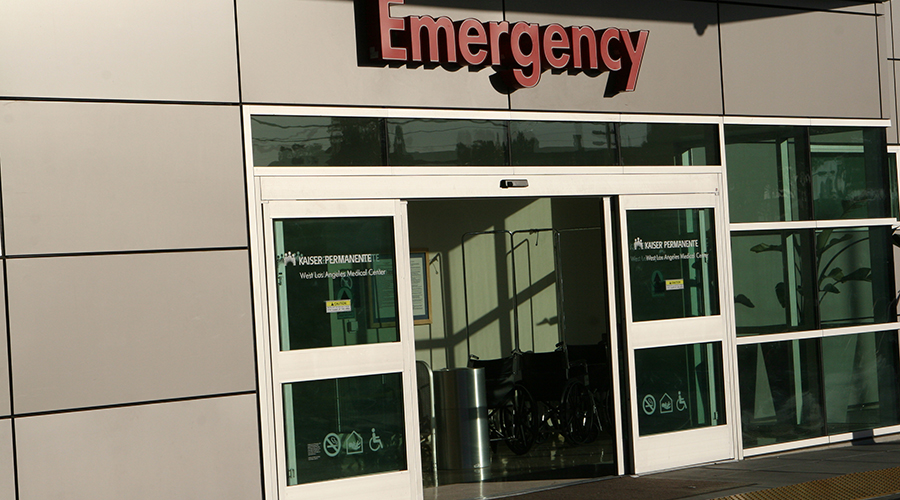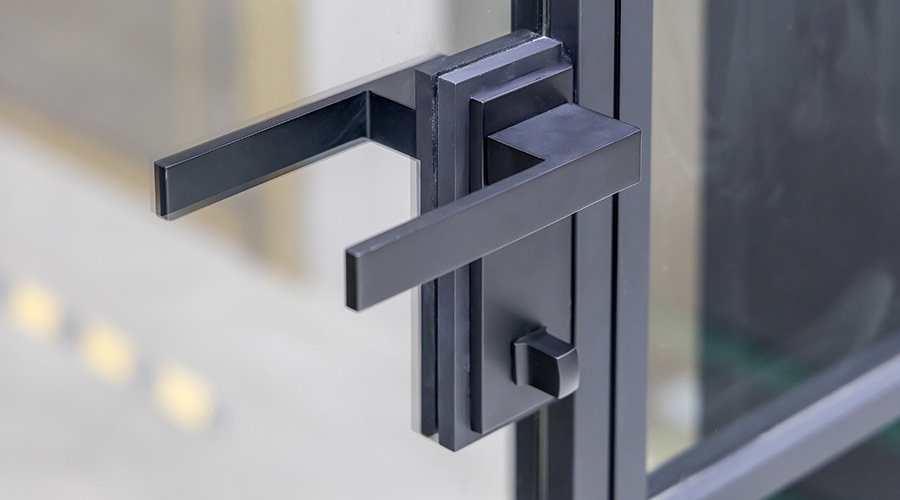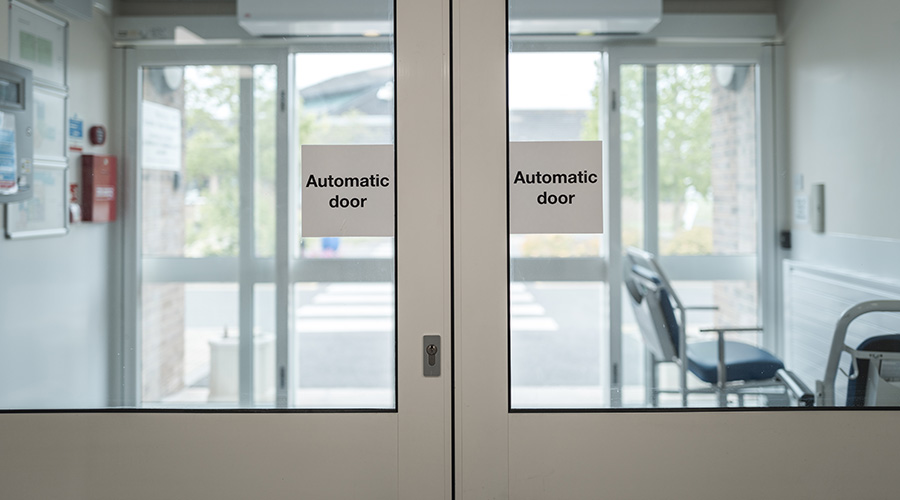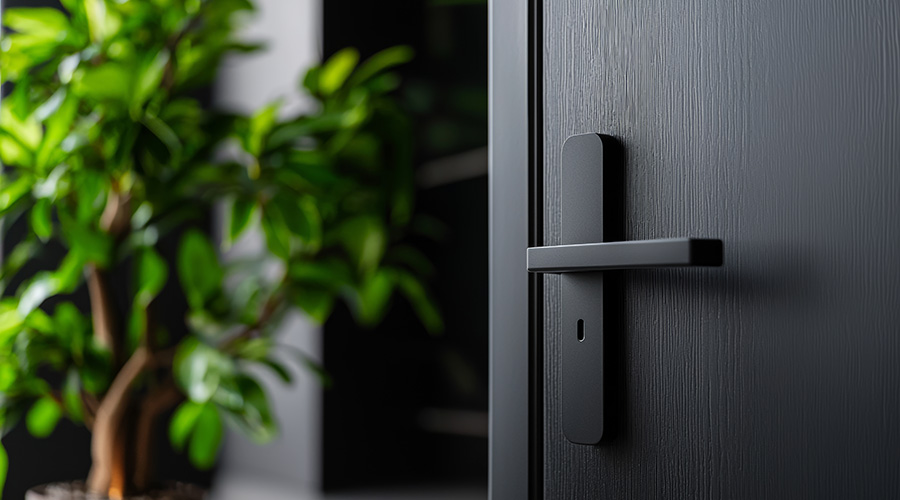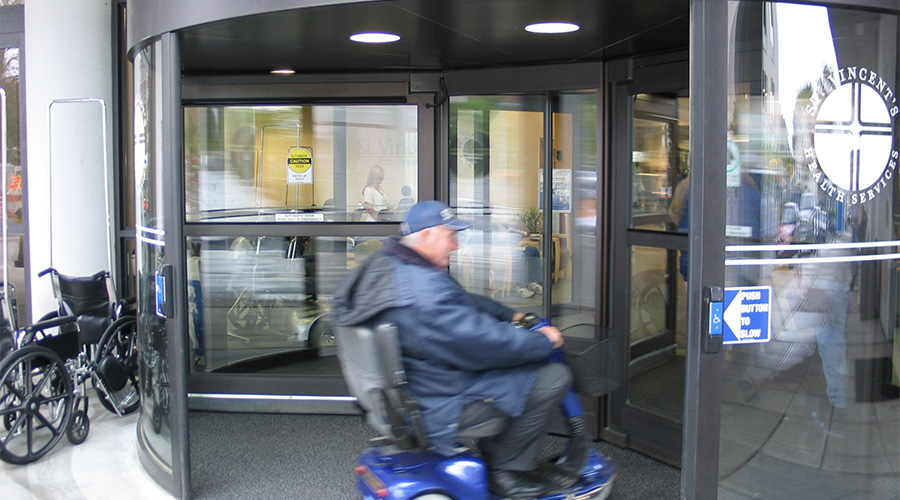Tailoring Door Hardware Strategies to Facility Needs
Commercial office, healthcare and education facilities tap into evolving products and technology to address occupant demands.
The changes to doors and door hardware are playing out differently based on the types of institutional and commercial facilities in question. Few building markets have been affected as much as education facilities.
“Being able to protect students and staff and then in an unfortunate security event, being able to lock facilities down and being able to secure facilities but also allow movement in and out under normal circumstances — that philosophy of security has grown significantly,” Wicks says. “A lot of effort is put into studying how staff and students circulate through the campus and through buildings and what has to be done during an unfortunate security event to protect things and to protect staff.
“We look at what door hardware could be used to most effectively do this but also not make it cumbersome for normal operations, which is important. If security is inconvenient, it’s not going to be used.”
The last decade has been turbulent for healthcare facilities. Beyond challenges presented by the pandemic and workplace violence, organizations also have had to deal with a changing business environment that has seen ongoing mergers and acquisitions, which affect facility operations.
“It used to be that each hospital had its own system, and over time these hospitals get acquired by larger systems,” Baumann says. “Now you’ve got a healthcare system that has nine hospitals and nine different access control systems. Those get connected to every end point at every door, and now you’ve got a patchwork of software controlling the entire system. The big shift in healthcare especially is transitioning to unified software platforms that monitor and control these doors and the hardware that controls access to them.”
In commercial offices, the push for workers to return to the office has reshaped many occupant experiences, including the technology required to access buildings and offices.
“As far as office buildings, by far the biggest trend is the use of mobile credentials,” Gips says. “You see it everywhere. That’s not to say that proximity cards and smart cards aren’t in widespread use.
“But there’s almost no time where you don’t have your phone, and you can register for the access control credentials remotely. You don’t have to go into an office. People aren’t losing their cards. Cards aren’t being stolen, so there’s less of a security threat there. There’s less of a cost of replacing cards because you don’t have cards anymore. People have their phones. And it’s really convenient to open your phone and wave in front of a reader.”
Beyond installation
Given the expanding role of doors and door hardware in facilities security and occupant safety, it is understandable that organizations are paying more attention to not just design and construction considerations but to the actual operation of these building components. In a growing number of cases, the growing complexity of these products is prompting owners and managers to rethink their organizations’ approach to post-installation activities.
“We are definitely seeing a trend of a higher priority towards heightened convenience,” Gips says. “Not just for users, but for access control administrators and facility managers. You have a lot of legacy systems that are robust, but they’re very complicated.
“You have to have an expert door installer or maintenance person on staff, or you have to hire a contractor because this stuff is too complicated for the person on staff. There is a trend toward easier-to-use systems that have easier interfaces.”
New-generation products also are affecting the day-to-day workloads of in-house technicians.
“We have a lot of technology electrifying these locks now,” Wicks says. “Now you have locks that are built into the door versus being on the frame side of the door. With that comes a lot of maintenance and testing. The more parts you add to something, especially when it’s electrified or it switches, that has to be inspected and tested on a regular basis.
“When we do assessments for facilities, we’ll inspect all the doors and locks and the electronics associated with it, and we’ll notice that this door hasn’t been used in a while because you can see the hinges are starting to rust. A lot of the components on that door don’t work, but nobody’s been there to visit it, so they do not know it doesn’t work.”
As threats to facilities and occupants grow, owners and managers are responding to the growing realization that these products and systems cannot wait if a maintenance issue arises.
“One of the biggest changes is that while most institutions have a third party that they’re able to call, really, the maintenance staff now has had to become more educated and knowledgeable about that product line so that they can address it immediately,” says Al Murro, assistant vice president of building technology services with WSP. “Regardless of who you have on call, sometimes it has to be addressed right away or at least have a product knowledge to be able to disseminate to that third party. In the case of a hospital, you’ve got many, many doors.”
The post-installation phase for doors and door hardware now is more likely to include technology to give system operators the ability to monitor expansive systems in ways that extend their reach further into facilities.
“It used to be that somebody was going around checking function on all of these individual doors,” Baumann says. “Today, you’ve got software to monitor the health of these organizations, and without getting into any specific product that's available, there’s a number of options that can be instituted that can literally give you visibility to the function of all of these devices and how they’re working so that you know the health of the system and you understand at a glance what your landscape looks like without having to have those individuals go around and check function on those.”
Perhaps most importantly, events of the last decade have prompted facility executives and managers to reprioritize their approach to security and access control in ways that reflect the systems’ importance to their organizations.
“They really need to shift in the way they think about this,” Wicks says. “What you do for your fire safety system you also need to do for your security safety system. You’re treating them the same. They should have the same maintenance program. They should have the same upgrades. They should be looked at periodically.”
Dan Hounsell is senior editor for the facilities market. He has more than 30 years of experience writing about facilities maintenance, engineering and management.
Related Topics:






